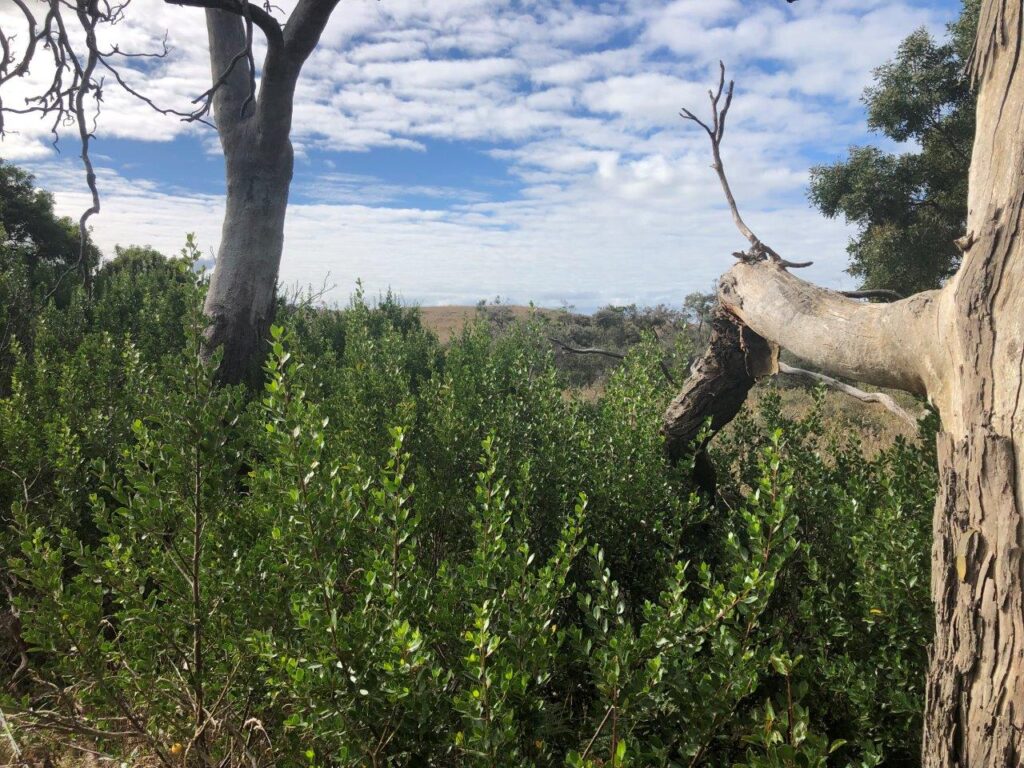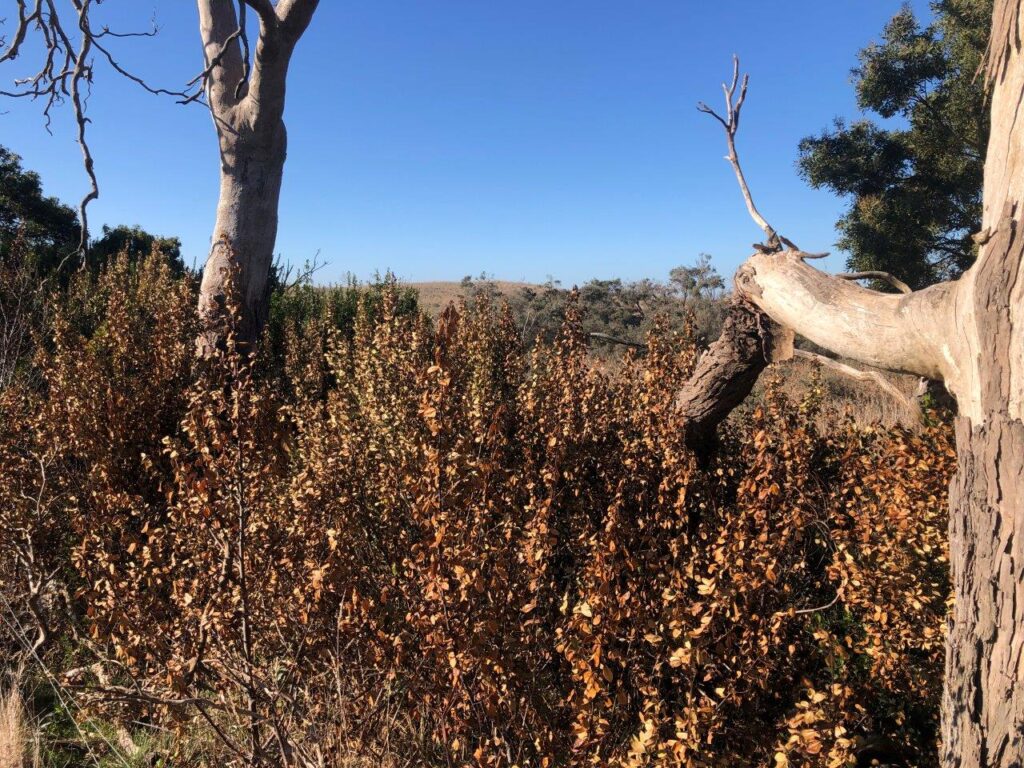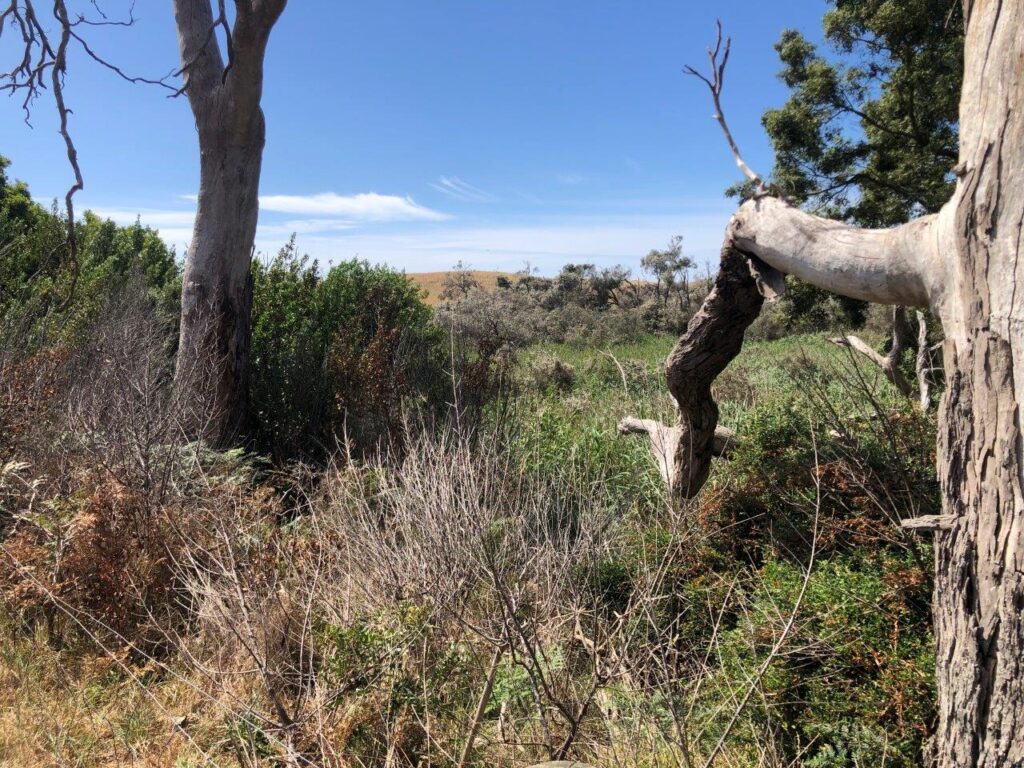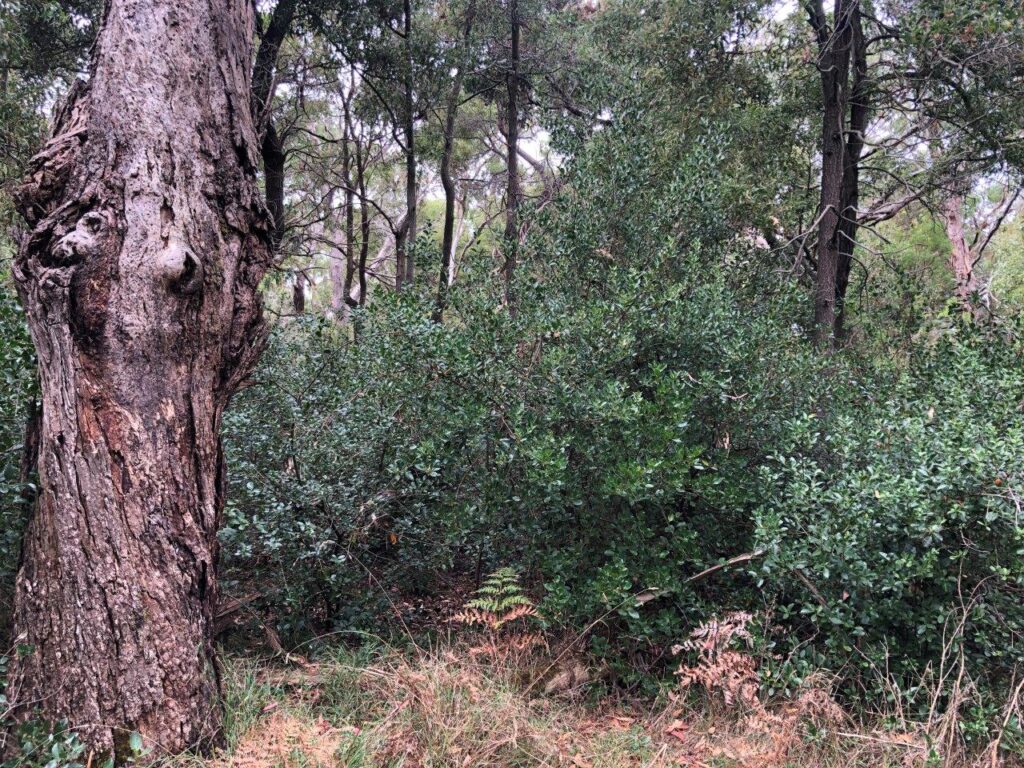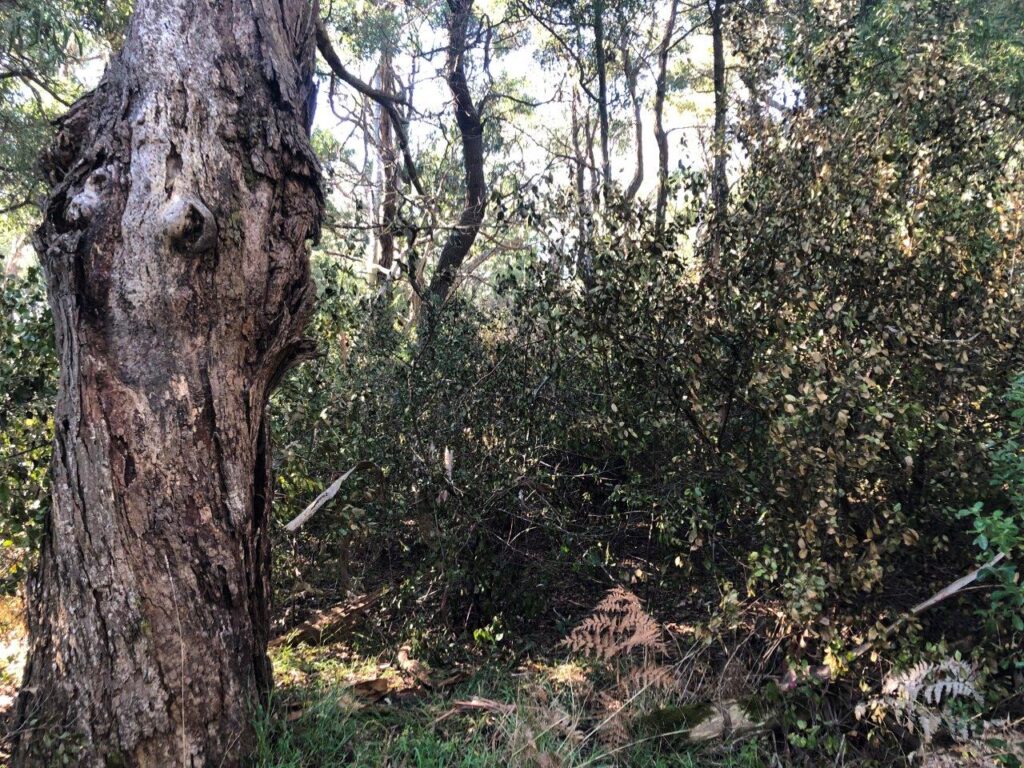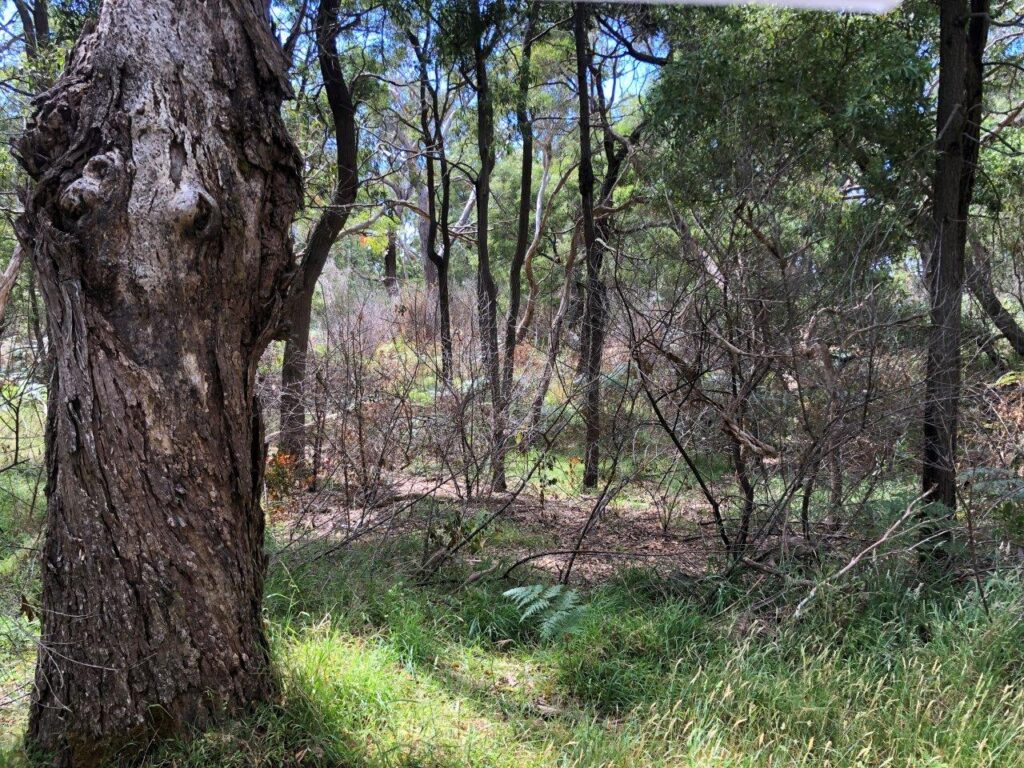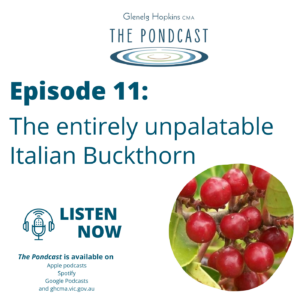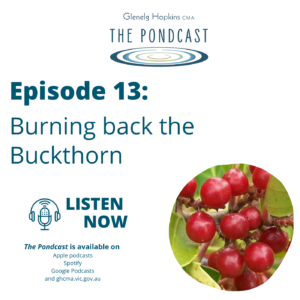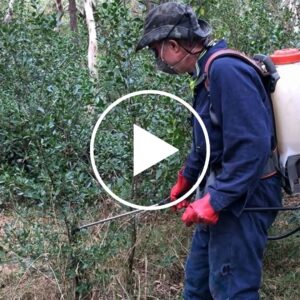Italian Buckthorn

Controlling woody weeds
This introduced woody weed with attractive red and black berries is starting to establish itself in the coastal soils of south west Victoria and along some of our waterways. With its overbearing growth tendencies, this page highlights the features of this problem plant and options to control it.
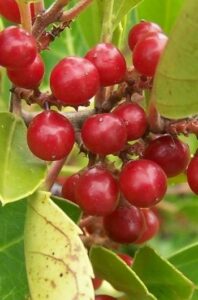
What is Italian Buckthorn?
Italian buckthorn (Rhamnus alaternus) is a fast-growing invasive shrub that comes from the Mediterranean area. It is a weed now found in coastal areas of Victoria and is also present in the southern part of the World Heritage listed Budj Bim cultural landscape.
Italian Buckthorn (IBT) is very hardy and has historically been planted as hedges and in gardens.
The dense growth forms a barrier and shades out other plants, often preventing natural regeneration of native trees and shrubs.
Italian Buckthorn reproduces via seed from berries. Fruit production per plant has been estimated at approx. 11,000 berries per mature plant.
It is now considered an environmental weed as it is not native to Australia, can grow on a range of soil types in full sun, partial or almost full shade, and displaces native vegetation.
Distribution
In the Glenelg Hopkins region, Italian Buckthorn is found in coastal areas and along waterways from Warrnambool in the east to Nelson in the west. It is present at Tyrendarra Flora Reserve, part of the Budj Bim cultural landscape, where it threatens ecological values of the reserve and adjacent waterways – Killara (Darlot Creek) and Palawarra (Fitzroy River).
Along with local communities, landholders and project partners, a program has been established by Glenelg Hopkins CMA to control Italian Buckthorn at Tyrendarra Flora Reserve, funded by the Budj Bim Connections Flagship Waterway Project.
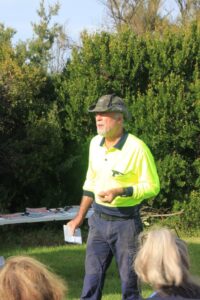
What is being done to control it?
In areas of significance like the Tyrendarra Flora Reserve, the plant is being taken to by Robin Adair from Australis Biological (pictured).
Below in the series of short audio pieces, Robin explains the best ways to control the weed in situ – from garden settings of one plant, to larger infestations on a landscape scale.
What control looks like
LEARN MORE – AUDIO ON DEMAND
These audio snippets from Robin Adair speaking about control of Italian Buckthorn are taken from a community information day held On Country as part of the Budj Bim Connections Flagship Project as a practical explanation for members of the community to deal with the weed – from one plant in the garden, to a landscape scale infestation.
An introduction to IBT and why we need to control it
Legislation and legal requirements for control
Growth forms of IBT in various light conditions
Physiological aspects of the plant – how is suppresses others
How IBT spreads itself so quickly around the place
The good and bad aspects of IBT
These clips explain the different control methods for Italian Buckthorn and how to undertake them safely and in what circumstances they should be implemented.
CONTROL METHOD – How to deal with one plant in your garden
CONTROL METHOD – The cut and paint method with a pruning tool / loppers
CONTROL METHOD – Using a chainsaw for larger trees followed by chemical
CONTROL METHOD – Foliar application of sprays
CONTROL METHOD – Basal Bark Banding
CONTROL METHOD – the Do’s and Don’ts of Basal Bark Banding method
How to use the Basal Bark Method on small IBT plants
How to use the Basal Bark Method on established plants
How IBT degrades after control methods
Now go forth and get rid of IBT!
Listen to the episodes of The Pondcast about Italian Buckthorn where we caught up with Robin in the field
Click on the images below or links to listen to the episodes
Dealing with IBT in the field
Robin Adair demonstrates just how little chemical is required to achieve excellent results in controlling the IBT plants in the landscape.

